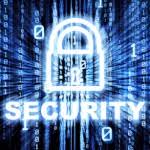The Vicious Cycle Why Paying Ransoms Only Fuels the Cyber Crisis.
In the face of a paralyzing ransomware attack, the decision to pay ransoms can feel like the only way out. When a business, a hospital, or an individual’s most critical files are held hostage, the calculation is often immediate: the cost of the ransom is less than the cost of downtime.
But this simple calculation ignores the profound, long-term risks.
This dangerous reality was recently underscored by Australia’s cybersecurity chief, who issued an urgent plea to victims following the release of thousands of citizens’ private details onto the dark web after a massive attack. Their message was unequivocal: Do not pay the ransom.
While the instinct to reclaim data is understandable, paying cyber criminals is not a solution—it is merely an investment in the next wave of crime. Here is a deep dive into the true risks of funding the criminal economy and why we must collectively stand firm.
1. The False Promise of Recovery
When a ransom is paid, the victim is expecting two things: a decryption key and the guarantee that their data will be destroyed. Unfortunately, there is no honor among thieves.
You Are Not Guaranteed Your Files Back
Decryption is a complex process. Even after payment, cyber security researchers estimate that only about half of organizations that pay the ransom successfully recover a significant portion of their data.
- Faulty Keys: The criminal software may be poorly coded, meaning the decryption key provided is ineffective or only partially works, leaving data corrupted.
- Silence: Some criminals take the money and disappear, never providing the key at all.
In essence, paying a ransom is a costly transaction with zero customer service and zero guarantee of product delivery.
2. Ransoms Funding the Next Generation of Attacks
Every dollar funneled into a criminal organization reinforces their business model. Ransomware is no longer the work of lone hackers; it is a multi-billion dollar, hyper-efficient industry built on predictable revenue streams.
When an organization pays a ransom:
- It Validates the Attack: It signals to the criminal community that the target (and similar organizations) is a viable mark.
- It Improves Criminal Technology: Ransom money is reinvested into better tools, more sophisticated phishing campaigns, and enhanced evasion techniques, making future attacks harder to detect and mitigate.
- It Raises the Stakes: As criminals become richer and their tools improve, the ransom demands increase exponentially. Your payment today makes your and everyone else’s future defense more expensive tomorrow.
The Australian government’s plea recognizes this systemic problem: paying a ransom might solve your immediate problem, but it guarantees a tougher, costlier fight for everyone else down the line.
3. The Double Extortion: Data Is Already Gone
The incident involving the release of Australian private details illustrates a critical evolution in cybercrime: double extortion.
In the early days of ransomware, criminals would simply encrypt data. If you paid, they unlocked it. Now, criminals operate under a two-part threat:
- Encryption: Your local files are locked.
- Exfiltration: Before locking the files, the criminals copy and steal a massive amount of your sensitive data (customer lists, financial documents, HR files).
This means that even if you pay the ransom demanded for the decryption key, the criminals still hold significant leverage. They can then demand a second payment to prevent the release of the stolen data.
As the Australian incident tragically proved, criminals frequently fail to delete the stolen files, even after payment. The data is either sold to other criminal groups, or it is released onto the dark web anyway, simply to prove they are serious and maintain their reputation for future extortion efforts.
In this new reality, paying the ransom does not eliminate the risk of a massive data breach; it only reduces the criminal’s financial risk.
4. Paying Ransoms Sets You Up as a Repeat Victim
Organizations that have paid a ransom in the past are demonstrably more likely to be targeted again.
Why?
- Proof of Payment: You are now flagged in criminal databases as a company that is willing and able to pay.
- Known Vulnerabilities: The initial breach provided the criminals with intimate knowledge of your network weaknesses, making re-entry easier and faster the second time around.
For criminals, successfully extracting a ransom is the ultimate qualifying factor for future attacks.
What Is the Alternative? Defense, Preparedness, and Resilience
The only effective defense against ransomware is to make the payment option irrelevant. If paying the ransom is not an option, then resources must be focused on robust security and recovery plans.
1. Robust Backups are Your Lifeline
The single greatest defense against file encryption is an up-to-date, secure, and isolated backup. Organizations should employ the “3-2-1” rule: three copies of your data, on two different media types, with one copy stored off-site (or offline, often referred to as “air-gapped”).
If you can restore your systems from a clean backup, the criminals lose their leverage, and you lose nothing but a few hours of downtime.
2. Multi-Factor Authentication (MFA)
Over 80% of successful breaches involve stolen or weak credentials. Enforcing MFA across all systems especially remote access, email, and privileged accounts is the quickest way to stop a criminal from capitalizing on a stolen password.
3. Immediate Reporting and Collaboration
When an attack occurs, reporting it to national cybersecurity centers and law enforcement immediately is crucial. These agencies can often provide up-to-date decryption keys, intelligence on the criminal group responsible, and vital support to minimize the damage.
The Collective Stand
Refusing to pay a ransom is more than just a smart internal security decision it is a collective act of geopolitical resistance.
Each refusal to pay helps dismantle the financial incentive that powers the ransomware industry. As cybersecurity leaders around the world, like Australia’s chief, affirm, we must prioritize resilience and recovery over capitulation.







